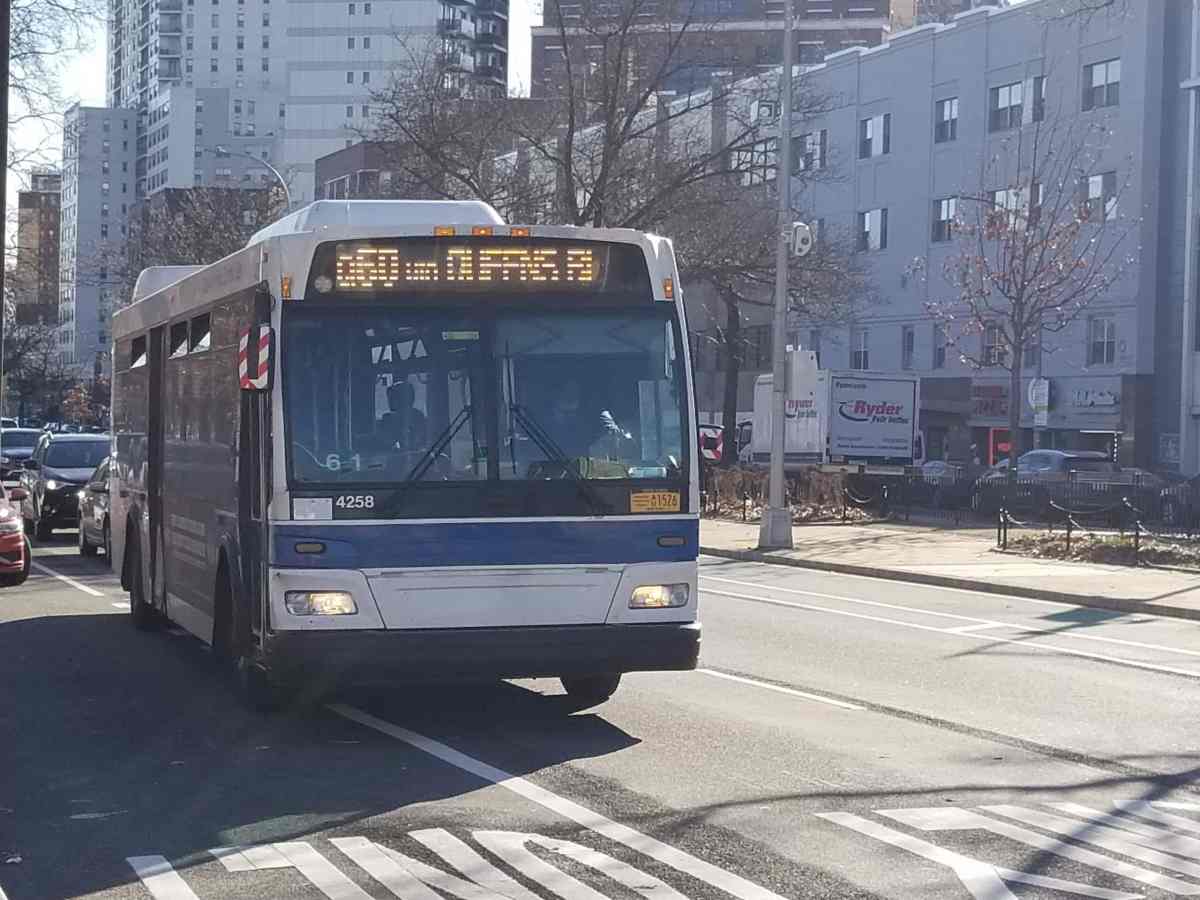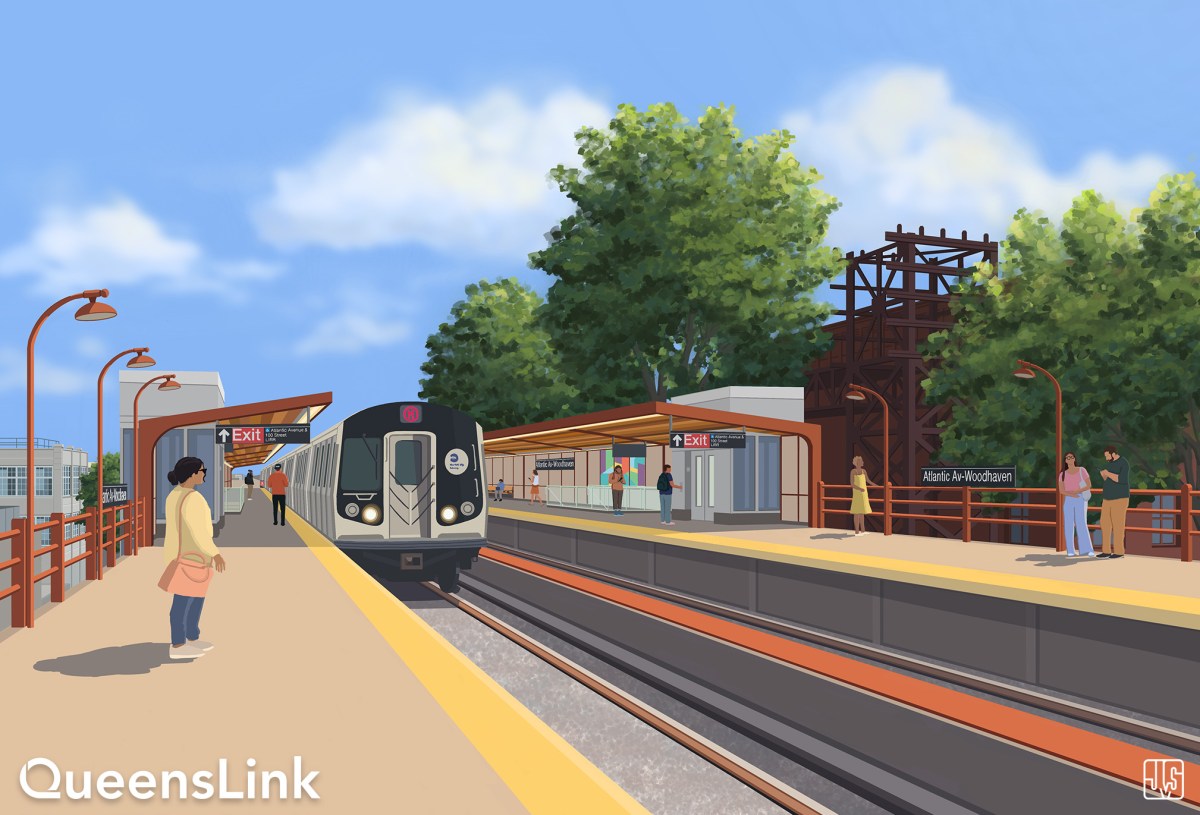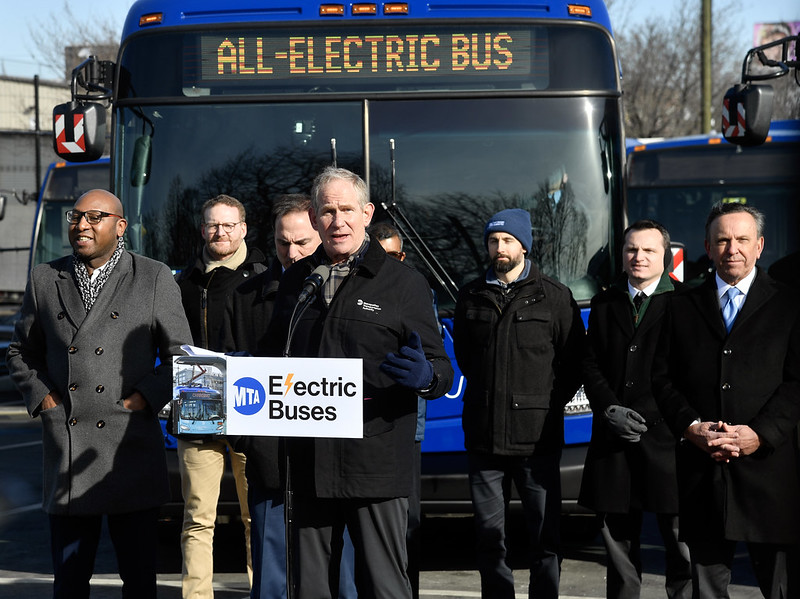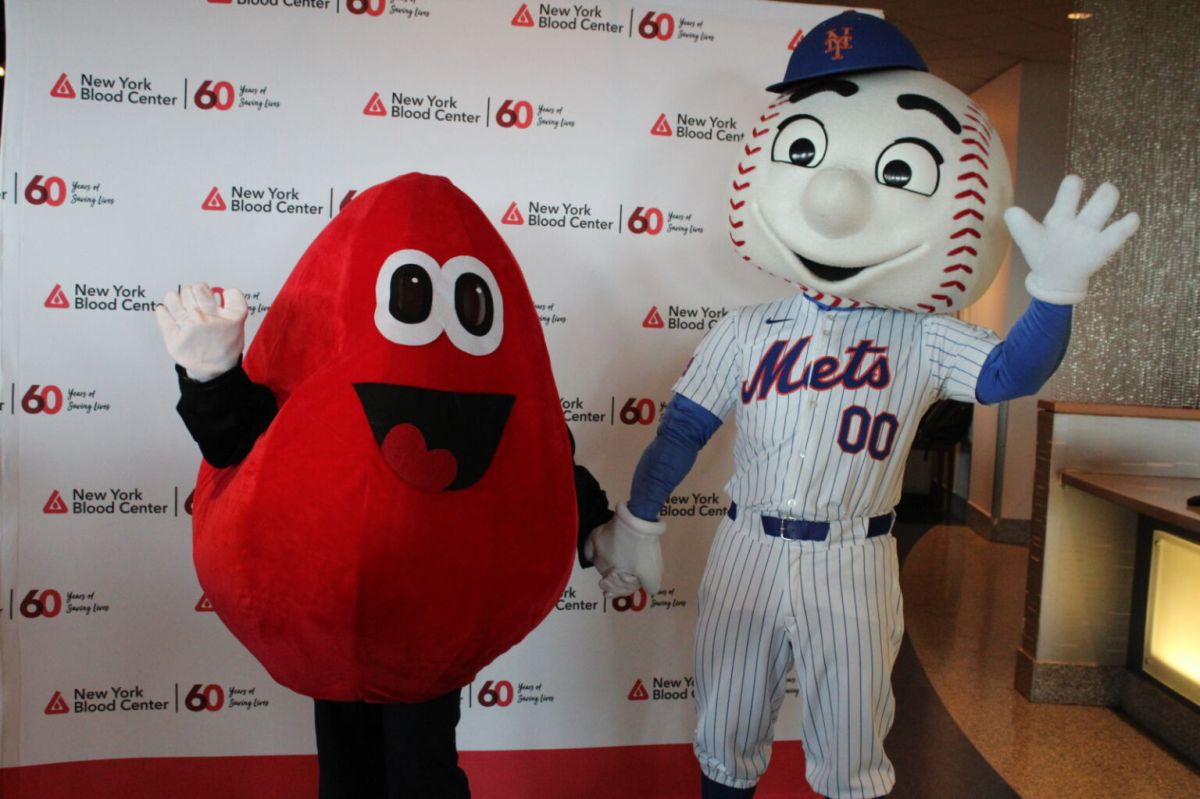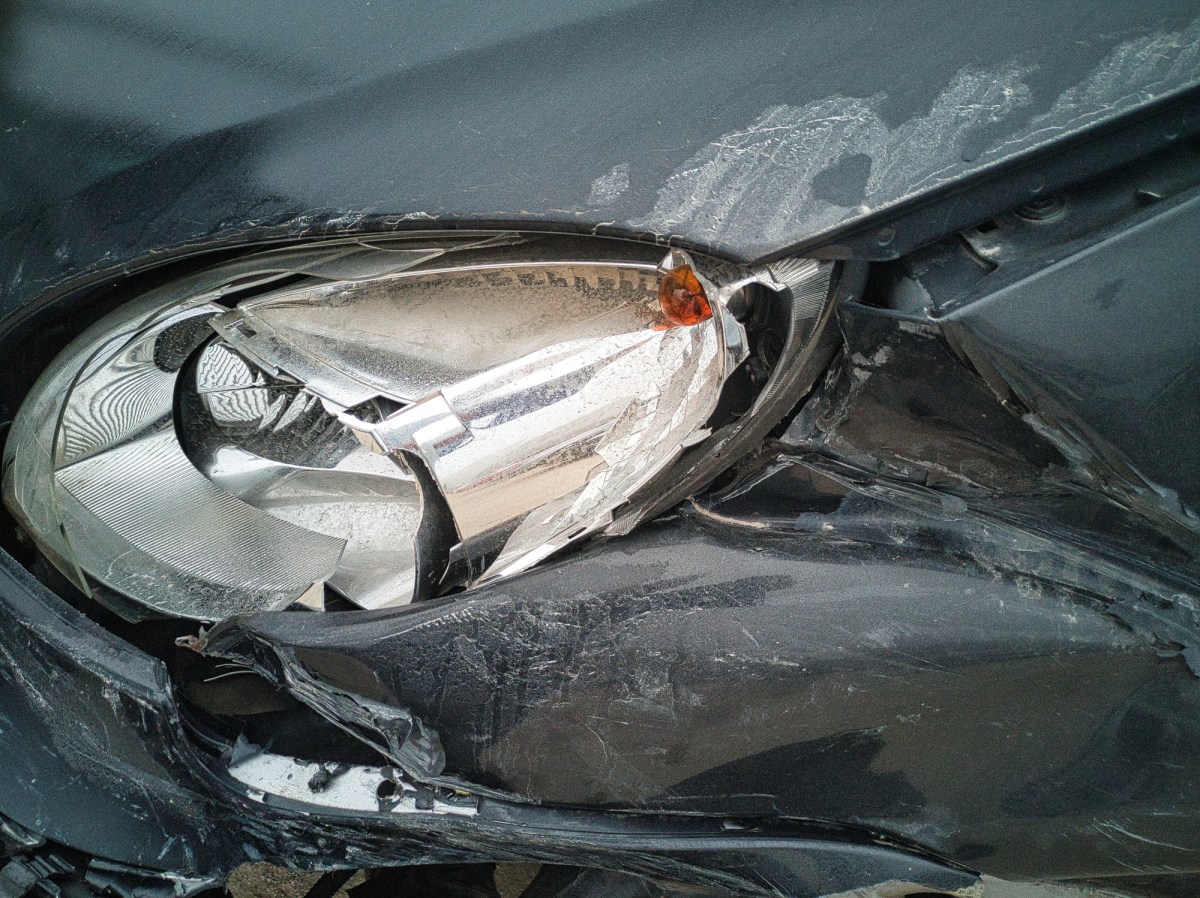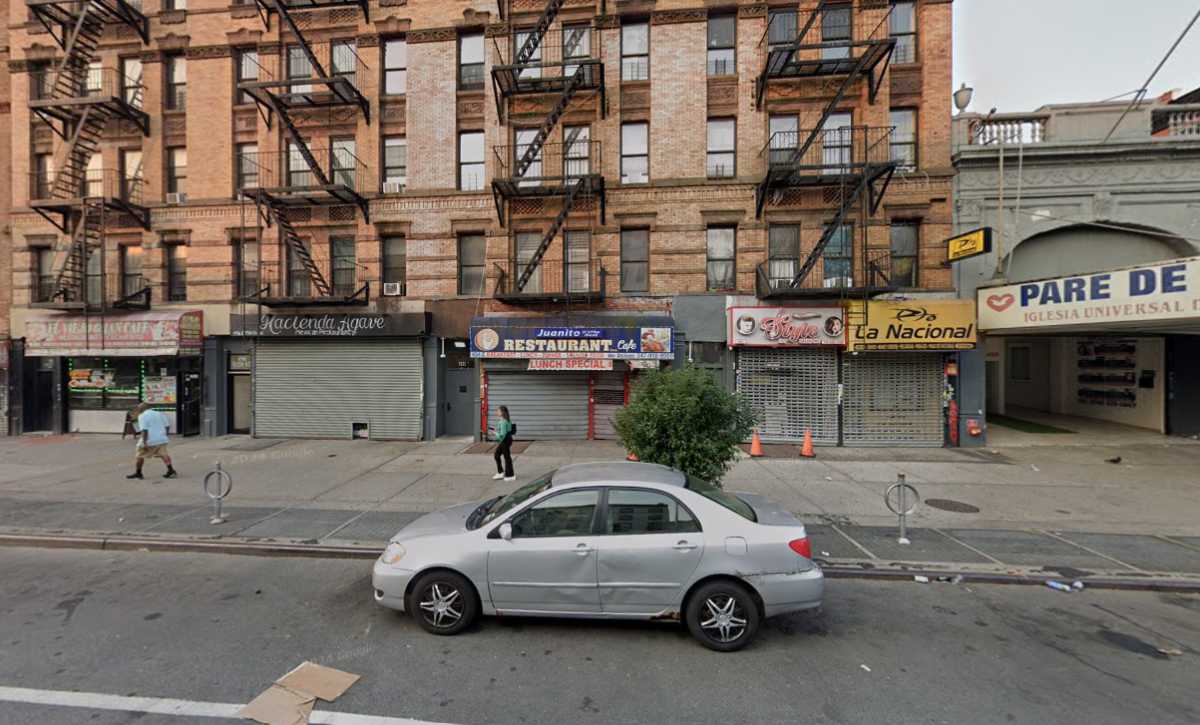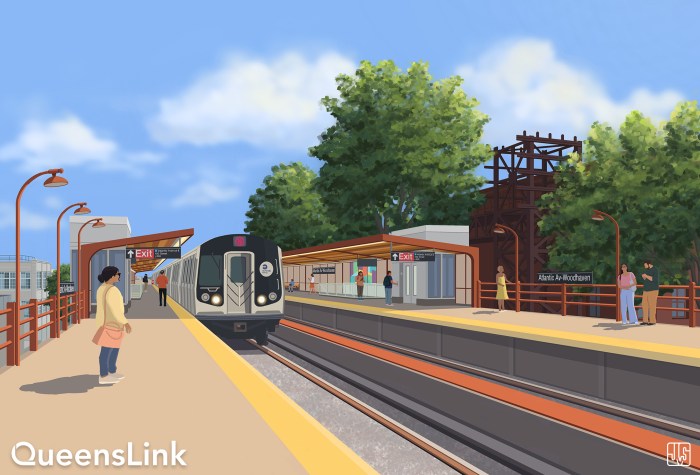All aboard, Queens! Changes are coming to your commute.
The MTA on Tuesday unveiled its final proposal to redesign Queens’ bus network, aiming to improve travel speed and reliability in the city’s most bus-dependent borough.
The final proposal comes after nearly two years of public outreach to residents of Queens, which is heavily reliant on buses because the borough has relatively few subway lines. About 800,000 people commute on buses in Queens each weekday, more than the bus ridership in the entire city of Chicago.
“This has been years in the making,” MTA Chair and CEO Janno Lieber said at a press conference in Kew Gardens on Tuesday. “Because of history, Queens has much less rail service, subway and commuter rail, than its population would justify. And we are dealing with it by having the most intense and vibrant bus network in the city.”
The plan calls for 121 total bus routes in the World’s Borough, eight more than exist now. That includes local, limited, express, and select buses, plus a new designation called “Rush” intended to quickly transport passengers from outlying neighborhoods to transit hubs where they can connect to rail service.
The new map, which is subject to public scrutiny, adds some new routes while nixing or combining others. The bus network was originally designed to follow old trolley routes, and officials say the system — largely unchanged for decades — has not kept pace with shifting development patterns in the growing borough.
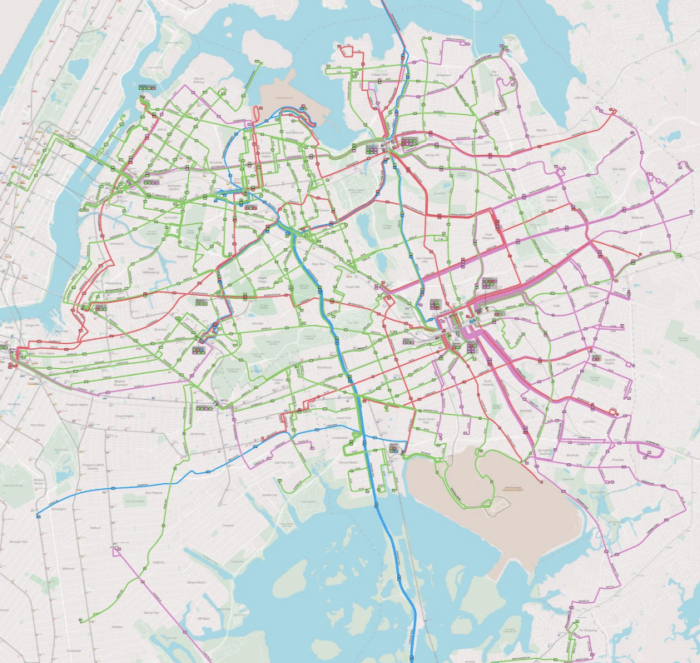
“We have a once-in-a-generation opportunity to create a vibrant, 21st-century bus system that can support the economy and the opportunity that we want for Queens,” said Lieber. “This is where it starts.”
Stops would be more widely spaced on local routes, aiming to reduce travel time on the city’s buses, which are the slowest of any major American city. Officials aimed to create straight, direct routes and limit the number of time-consuming turns, while simplifying often-confusing corridors with multiple overlapping routes. The MTA also sought to improve connections between buses and other transit like the subway and Long Island Rail Road, as well as routes between Queens and other boroughs.
The proposal includes eight more local bus routes than currently exist. The number of express bus lines is unchanged from the present, but would include a brand new route from transit-starved southeast Queens to lower Manhattan, the QM65, while eliminating the existing QM3 along Northern Boulevard due to low ridership and overlapping local routes.
Queens would be the third borough bus network to get the redesign treatment if approved, after express buses in Staten Island and all buses in the Bronx. The MTA released a draft proposal for Brooklyn late last year, which is currently subject to public review. The process was kicked off by former New York City Transit President Andy Byford, commonly known as “Train Daddy.”
A draft redesign was originally published in 2019 and touted as a clean slate for the network. But that plan, and network redesign efforts overall, were paused when COVID-19 hit the city, just days after Byford resigned from the MTA. The agency opted to start over in Queens when efforts resumed, rather than continue tweaking Byford’s controversial plan.
Since submitting the Queens draft plan for review in March 2022, the MTA received nearly 4,000 comments from the public, most focused on routing and bus stop spacing. The line with the most comments was the Q44 select bus, which runs from Jamaica to the Bronx Zoo; many commenters asked for the line to be extended to the Bronx High School of Science, but the MTA opted to keep it as is because the route is “already very long.”
Comments for many other routes were heeded, though, with many of the draft’s proposed changes being completely withdrawn in the final map.
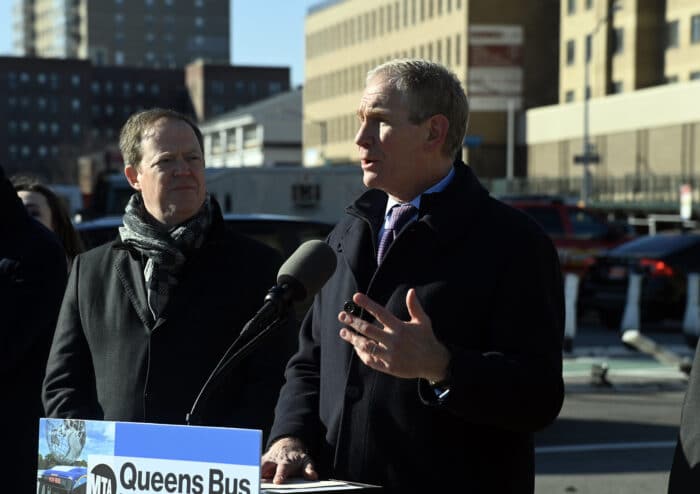
The redesign process has not been without controversy, with many residents across the borough particularly miffed at the increased space between stops and, by extension, the reduction in overall number of stops. The MTA says that in Queens, 83% of riders will get to use the exact same bus stop they use today after the redesign. New York’s bus stops are some of the most closely-spaced of any major city, and the MTA says that 20 seconds of travel time are saved for each stop removed, which can add up to a considerably shortened commute.
And it’s unclear how much network redesigns alone can move the needle. In the Bronx, where the redesign was completed last June, bus speeds are still below 8 miles per hour, only a marginal improvement from before. Transit officials conceded that redesigning routes is just one piece of the puzzle for improving bus riders’ commutes.
“Redesigns are important, but it is one tool in the toolbox to make bus service better,” said Rich Davey, president of New York City Transit, the MTA’s subway and bus division. “That includes bus lanes, that includes [Automated Camera Enforcement].”
Bus speeds improve by about 10% on routes where bus lanes are implemented, and can shoot up by 40% on a bus-only road called a busway, according to MTA data. The city’s Department of Transportation is required by law to build 30 miles of new bus lanes each year, but has fallen considerably short during the Adams administration.
DOT Commissioner Ydanis Rodriguez admitted to reporters Tuesday that the city has only built 18 miles of new bus lanes this year, despite calls by MTA brass for a faster timeline. Bus priority projects have hit snags across the city as opponents line up to skewer proposals, most notably Fordham Road in the Bronx.
The release of the final plan does not mean the process is over. The plan will now be the subject of open houses, community board presentations, on-street engagement directly with riders, and eventually a public hearing in 2024 before a vote by the MTA Board. All told, the redesign would go into effect in 2025 if all goes to plan.
Queens elected officials on Tuesday urged residents to speak up during the public outreach period. And at least one of those electeds made public her quibbles on Tuesday. Southeast Queens Council Member Selvena Brooks-Powers, chair of the Transportation Committee, said she had “serious concerns” about the proposal’s impact on her constituents, especially with the looming arrival of congestion pricing.
“I want to ensure the MTA is looking at the bus redesign and congestion pricing holistically, and this process must be equitable and balanced,” said Brooks-Powers. “I’m encouraging community leaders and community members to be vocal advocates in the process, fiercely engaged in the discussion from start to finish.”
Queens residents can learn more about the proposed bus network redesign, route-by-route, at https://new.mta.info/project/queens-bus-network-redesign. To directly compare how new routes differ from old ones, visit https://platform.remix.com/project/d6368ff6



